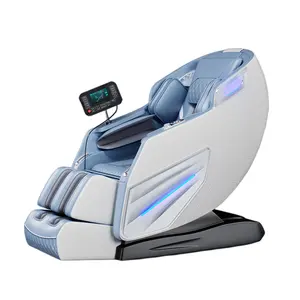Phổ biến trong ngành của bạn






Nguồn Nhà Sản Xuất A3 30Cm Xp600 Đầu Kép Dtf Máy In Dtf Máy In T-Shirt Máy In Với Bột Shaker
6.100.179 ₫ - 62.272.656 ₫
Đơn hàng tối thiểu: 1 Bộ







14 năm kinh nghiệm 1.9m 2 i3200 in vải kỹ thuật số Giá máy nhuộm thăng hoa máy in cho t Áo sơ mi
23.536.523 ₫ - 142.337.499 ₫
Đơn hàng tối thiểu: 1 Bộ







160T 200T 4000 Kim Loại Servo Thủy Lực CNC Phanh Báo Chí Phanh Uốn Giá Máy
149.104.884 ₫
Đơn hàng tối thiểu: 2 Bộ







Giá của 64 "3M màu Vinyl Sticker máy in decal mà không cần máy cắt mà in trên Vinyl
45.725.922 ₫ - 50.809.404 ₫
Đơn hàng tối thiểu: 1 Bộ


cheap used combo heat press machine 8in1 digital combo heat press
Sẵn sàng vận chuyển
5.337.657 ₫ - 5.846.005 ₫
Đơn hàng tối thiểu: 1 Bộ
Vận chuyển mỗi chiếc: 5.606.065 ₫





Thiết kế đặc biệt sử dụng rộng rãi 3600W 220V kỹ thuật số lớn định dạng nhiệt Báo Chí
11.437.835 ₫
Đơn hàng tối thiểu: 1 Cái






Máy Ép Nhiệt In Chuyển Nhiệt Máy Ép Nhiệt Bằng Tay Vinyl Kỹ Thuật Số Thăng Hoa 15X15 1 Bộ 27
Sẵn sàng vận chuyển
2.668.829 ₫ - 2.923.003 ₫
Đơn hàng tối thiểu: 1 Cái
Vận chuyển mỗi chiếc: 2.535.387 ₫






Máy Ép Nhiệt Áo Thun Kỹ Thuật Số 29*38Cm Máy Truyền Nhiệt Máy Ép Nhiệt Để In Áo Thun
Sẵn sàng vận chuyển
2.287.567 ₫ - 2.541.742 ₫
Đơn hàng tối thiểu: 1 Bộ
Vận chuyển mỗi chiếc: 1.206.057 ₫






Báo chí cao 6000psi sưởi ấm đôi trục lăn máy thăng hoa
27.933.735 ₫ - 28.467.500 ₫
Đơn hàng tối thiểu: 1 Cái






Hình Dạng Tròn Presse Hydraulique Máy Ép Gạch Thủy Lực Máy Ép Tay Thủy Lực 477Mcm
231.298.435 ₫ - 233.840.176 ₫
Đơn hàng tối thiểu: 1 Bộ






Các tìm kiếm liên quan:
báo chí kỹ thuật số tốt nhấtbán báo chí kỹ thuật số đã qua sử dụngbáo chí chàm kỹ thuật sốmáy ép kỹ thuật số ngoài trờicông nghiệp báo chí kỹ thuật sốmáy ép kỹ thuật số trung quốcmáy ép kỹ thuật sốmáy ép kỹ thuật số trung quốcmáy ép nóng chu kỳ ngắn 4x8thiết bị ép đa năngmáy ép cam tự độngbán báo chí kỹ thuật số đã qua sử dụngbáo chí chàm kỹ thuật sốbáo chí kỹ thuật sốmáy ép kỹ thuật số ngoài trời






Thăng Hoa Tumblers Mug Máy Ép Kỹ Thuật Số In Ấn Skinny Tumbler Máy Ép Nhiệt Bán Hot 20Oz 30Oz Tumbler Báo Chí OEM
Sẵn sàng vận chuyển
4.041.369 ₫ - 4.549.717 ₫
Đơn hàng tối thiểu: 1 Cái
Vận chuyển mỗi chiếc: 1.205.548 ₫






Renlitong mới kỹ thuật số Combo Máy ép nhiệt tốt nhất Máy ép nhiệt 2024 tốt nhất Mug Báo Chí
732.022 ₫
Đơn hàng tối thiểu: 1 Bộ
Vận chuyển mỗi chiếc: 805.987 ₫






Cơ khí điện Báo Chí J21/j23/jh21 loạt máy ép/đấm Máy sâu họng đấm máy đơn cột Báo Chí 125
101.669.642 ₫ - 114.378.347 ₫
Đơn hàng tối thiểu: 1 Bộ





Kim loại dập cơ khí điện tự động Báo Chí 160 tấn đấm máy
457.513.388 ₫ - 470.222.093 ₫
Đơn hàng tối thiểu: 1 Bộ






Hướng Dẫn Sử Dụng Kỹ Thuật Số CP2815-P Tự Động Mở Khí Nén Hat Heat Press
3.533.021 ₫ - 4.549.717 ₫
Đơn hàng tối thiểu: 1 Bộ






Năng suất cao Zirconia bột hình thành máy định hình bột nén ép thủy lực
902.318.070 ₫ - 940.444.185 ₫
Đơn hàng tối thiểu: 1 Cái






Mini kỹ thuật số lá dập nóng máy vàng bạc lá của nhãn hiệu da logo dập nổi Máy nâng cấp t khe cắm máy dập nóng
Sẵn sàng vận chuyển
2.033.393 ₫ - 19.291.815 ₫
Đơn hàng tối thiểu: 1 Bộ
Vận chuyển mỗi chiếc: 3.279.355 ₫






Trung quốc Nhà Máy CE phê duyệt Kỹ Thuật Số Lá Dập Nóng Sử Dụng Máy
Sẵn sàng vận chuyển
17.995.527 ₫ - 18.681.797 ₫
Đơn hàng tối thiểu: 1 Bộ
Vận chuyển mỗi chiếc: 2.986.800 ₫






Miễn phí vận chuyển của nhãn hiệu phẳng sử dụng T-Shirt thăng hoa máy in kỹ thuật số Nhiệt Báo Chí chuyển máy in HPC480-3
Sẵn sàng vận chuyển
4.193.873 ₫ - 4.549.717 ₫
Đơn hàng tối thiểu: 1 Cái
Vận chuyển mỗi chiếc: 2.182.339 ₫



Máy Ép Nhiệt Áp Suất Cao Mới 38*38Cm Câu Đố In Áo Thun
2.668.829 ₫ - 3.050.090 ₫
Đơn hàng tối thiểu: 1 Cái






Tmax thương hiệu phòng thí nghiệm sử dụng nhỏ nhỏ Lithium li di động pin điện cực Nhiệt Con lăn Báo Chí lịch máy
55.409.955 ₫
Đơn hàng tối thiểu: 1 Bộ
Vận chuyển mỗi chiếc: 28.009.987 ₫



Giày Máy ép nhiệt vớ nhiệt độ kỹ thuật số thăng hoa truyền nhiệt cho giày
2.516.324 ₫ - 3.024.672 ₫
Đơn hàng tối thiểu: 1 Bộ






Máy In Ruy Băng Thăng Hoa Con Lăn Dây Buộc Máy In Băng Ép Nhiệt Calandra
165.213.168 ₫ - 172.838.391 ₫
Đơn hàng tối thiểu: 2 Bộ


















Đa Chức Năng 3d Kỹ Thuật Số Thăng Hoa 8 Trong 1 Combo Máy Ép Nhiệt
5.973.092 ₫ - 6.608.527 ₫
Đơn hàng tối thiểu: 1 Bộ





ZY-120 Tốt Bán Vết Ribbon Máy In Kỹ Thuật Số Nhãn Máy In Máy In Nhãn Máy In Cho Bán
Sẵn sàng vận chuyển
12.962.880 ₫ - 13.471.228 ₫
Đơn hàng tối thiểu: 1 Bộ
Vận chuyển mỗi chiếc: 1.727.622 ₫






Máy Ép Nhiệt Hai Màn Hình Guangyintong Cho Cốc In Logo Nhà Cung Cấp Bán Sỉ Để In
Sẵn sàng vận chuyển
737.105 ₫ - 787.940 ₫
Đơn hàng tối thiểu: 1 Bộ
Vận chuyển mỗi chiếc: 915.536 ₫






Tùy chỉnh quần áo sử dụng giá thấp truyền nhiệt máy 6 trong 1
Sẵn sàng vận chuyển
3.024.672 ₫ - 3.278.846 ₫
Đơn hàng tối thiểu: 1 Bộ
Vận chuyển mỗi chiếc: 5.576.326 ₫






Chất Lượng Cao Giá Rẻ Giá Bán Phổ Biến Tùy Chỉnh Thiết Kế Nhiệt Báo Chí Thăng Hoa Trượt Đường Sắt Kết Hợp 4 Trong 1 Máy
4.295.543 ₫ - 5.312.239 ₫
Đơn hàng tối thiểu: 1 Bộ






Phòng thí nghiệm sử dụng Nhỏ Lithium di động pin điện cực CuộN để cuộn nhiệt con lăn Báo Chí lịch máy
86.419.196 ₫
Đơn hàng tối thiểu: 1 Bộ






Toàn Bộ Bán 40*60 Cm T Áo Sơ Mi Vinyl Công Suất Khí Nén Báo Nhiệt Chuyển Máy
17.792.188 ₫
Đơn hàng tối thiểu: 1 Bộ






Máy Ép Nhiệt Áo Phông Giá Rẻ Đã Qua Sử Dụng Máy Ép Nhiệt 16x24
3.456.768 ₫ - 3.558.438 ₫
Đơn hàng tối thiểu: 1 Bộ






40x60 nhỏ giá rẻ sử dụng t Áo sơ mi nhãn dán chuyển in ấn Máy ép nhiệt thăng hoa kỹ thuật số Vinyl 30 Máy in nhãn cung cấp
4.193.873 ₫ - 6.074.762 ₫
Đơn hàng tối thiểu: 1 Bộ






Chữ Số Bằng Đồng Kim Loại In Chữ Và Số Được Sử Dụng Trên Ngày Mã Hóa Máy/Bảng Chữ Cái Kim Loại Phông Chữ Dập Chữ Để Dập
8.897 ₫ - 12.709 ₫
Đơn hàng tối thiểu: 200 Cái




Giá Rẻ Giá Rẻ Sử Dụng T Áo Sơ Mi Kỹ Thuật Số Máy In Ảnh Giá
Sẵn sàng vận chuyển
2.287.567 ₫ - 2.668.829 ₫
Đơn hàng tối thiểu: 1 Cái






Giá rẻ sử dụng t áo máy ép nhiệt trực tiếp để nhấn t-shirt
Sẵn sàng vận chuyển
8.387.746 ₫
Đơn hàng tối thiểu: 1 Bộ
Vận chuyển mỗi chiếc: 7.277.768 ₫



Nhỏ Giá Rẻ Sử Dụng T Shirt Sticker Thăng Hoa Kỹ Thuật Số Vinyl Chuyển In Ấn Máy Ép Nhiệt Để Bán
7.625.224 ₫ - 10.166.965 ₫
Đơn hàng tối thiểu: 1 Bộ
Các danh mục hàng đầu
Giới thiệu về báo chí kỹ thuật số đã qua sử dụng
Ngày nay, báo chí kỹ thuật số đã qua sử dụng không còn là điều mới mẻ đối với những người bình thường và không còn bị coi là điều cấm kỵ khi sử dụng. Nếu bạn đang tìm kiếm niềm vui áp chót đó, bạn phải kiểm tra sự bao la. Bộ sưu tập báo chí kỹ thuật số đã qua sử dụng tại Alibaba.com. Những gợi cảm và cong. báo chí kỹ thuật số đã qua sử dụng đáng giá từng xu và chắc chắn làm cho đêm đó trở nên đặc biệt đối với bạn. Những con búp bê này có ngoại hình giống như thật, bắt đầu từ tóc đến ngón chân theo mọi nghĩa.
Cho dù bạn là một người cô đơn đang tìm kiếm một người bạn đời như cuộc sống hay một cặp vợ chồng muốn thêm gia vị cho cuộc sống của họ, bạn đều có thể sử dụng chúng . báo chí kỹ thuật số đã qua sử dụng để đốt cháy ngọn lửa đó. Những ngoạn mục. báo chí kỹ thuật số đã qua sử dụng có thể tùy chỉnh theo mong đợi của bạn. Những điều tuyệt vời. báo chí kỹ thuật số đã qua sử dụng có sẵn ở cả phiên bản dành cho nam và nữ và được làm từ silicone cấp y tế để sử dụng an toàn. Hãy sở hữu ngay bây giờ và tận hưởng một đêm đam mê và cháy bỏng.
Alibaba.com cung cấp những điều tuyệt vời này. báo chí kỹ thuật số đã qua sử dụng ở mọi hình dạng cơ thể, kích thước và sắc tộc. Dù yêu cầu của bạn đối với. báo chí kỹ thuật số đã qua sử dụng, bạn có thể tải tất cả chúng trên trang web. Những cái này. báo chí kỹ thuật số đã qua sử dụng được tạo hình bởi những người thợ thủ công giỏi nhất và mọi chi tiết phức tạp đều được kiểm tra kỹ lưỡng. Những con búp bê này có mắt, tóc, móng tay và tất cả các bộ phận cơ thể khác tương tự như người thật.
Alibaba.com cung cấp nhiều loại. báo chí kỹ thuật số đã qua sử dụng có thể giúp bạn mua các sản phẩm phù hợp với ngân sách và các yêu cầu khác của bạn. Các sản phẩm này an toàn để sử dụng, được chứng nhận và thân thiện với môi trường trong tự nhiên. Đơn đặt hàng OEM có sẵn trên các sản phẩm này.
Cho dù bạn là một người cô đơn đang tìm kiếm một người bạn đời như cuộc sống hay một cặp vợ chồng muốn thêm gia vị cho cuộc sống của họ, bạn đều có thể sử dụng chúng . báo chí kỹ thuật số đã qua sử dụng để đốt cháy ngọn lửa đó. Những ngoạn mục. báo chí kỹ thuật số đã qua sử dụng có thể tùy chỉnh theo mong đợi của bạn. Những điều tuyệt vời. báo chí kỹ thuật số đã qua sử dụng có sẵn ở cả phiên bản dành cho nam và nữ và được làm từ silicone cấp y tế để sử dụng an toàn. Hãy sở hữu ngay bây giờ và tận hưởng một đêm đam mê và cháy bỏng.
Alibaba.com cung cấp những điều tuyệt vời này. báo chí kỹ thuật số đã qua sử dụng ở mọi hình dạng cơ thể, kích thước và sắc tộc. Dù yêu cầu của bạn đối với. báo chí kỹ thuật số đã qua sử dụng, bạn có thể tải tất cả chúng trên trang web. Những cái này. báo chí kỹ thuật số đã qua sử dụng được tạo hình bởi những người thợ thủ công giỏi nhất và mọi chi tiết phức tạp đều được kiểm tra kỹ lưỡng. Những con búp bê này có mắt, tóc, móng tay và tất cả các bộ phận cơ thể khác tương tự như người thật.
Alibaba.com cung cấp nhiều loại. báo chí kỹ thuật số đã qua sử dụng có thể giúp bạn mua các sản phẩm phù hợp với ngân sách và các yêu cầu khác của bạn. Các sản phẩm này an toàn để sử dụng, được chứng nhận và thân thiện với môi trường trong tự nhiên. Đơn đặt hàng OEM có sẵn trên các sản phẩm này.
















